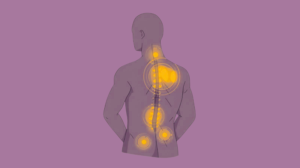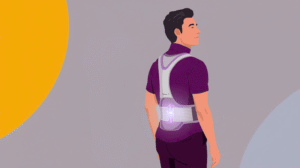Neck pain is a common condition affecting millions worldwide, and in many cases, it becomes a chronic issue that disrupts daily life, work, and emotional well-being. While muscle strain or poor posture are frequently cited causes, one lesser-known yet significant contributor is cervical instability.
Cervical instability refers to excessive or abnormal movement between the vertebrae in the neck (cervical spine), leading to mechanical dysfunction, nerve irritation, and chronic pain. Understanding this condition is crucial for proper diagnosis, treatment, and long-term relief.
What Is Cervical Instability?
The cervical spine consists of seven vertebrae (C1–C7), supported by intervertebral discs, ligaments, and muscles. These structures work in harmony to stabilize the neck and allow for controlled motion in all directions.
Cervical instability occurs when these stabilizing components fail—either due to injury, degenerative changes, or connective tissue disorders—causing the vertebrae to move more than they should. This abnormal motion can irritate nerves, strain muscles, and lead to inflammation, resulting in persistent or intermittent neck pain.
Types of Cervical Instability
- Traumatic Instability
Often seen after whiplash injuries or fractures, where ligaments or bones are damaged, compromising spinal integrity. - Degenerative Instability
Caused by age-related wear and tear of discs and facet joints, leading to weakened support and abnormal motion. - Ligamentous Instability
Results from lax or stretched ligaments, commonly found in patients with connective tissue disorders like Ehlers-Danlos Syndrome. - Post-surgical or Post-infectious Instability
Following spinal surgery or infections, the cervical spine may lose structural support.
Causes of Cervical Instability
Several underlying causes contribute to instability in the cervical spine:
1. Trauma and Whiplash
Motor vehicle accidents or sudden jerking movements can stretch or tear cervical ligaments. Even if no fracture occurs, the soft tissue injury can lead to long-term mechanical instability.
2. Degenerative Disc Disease
With age, cervical discs lose hydration and elasticity, leading to disc height loss and uneven load distribution. This process can destabilize the motion segments of the neck.
3. Connective Tissue Disorders
Conditions like Ehlers-Danlos Syndrome or Marfan Syndrome weaken ligaments and joint capsules, making the cervical spine more prone to hypermobility and instability.
4. Repetitive Microtrauma
Poor posture, sedentary lifestyles, and repetitive motions (e.g., prolonged computer use or manual labor) can gradually overstress cervical tissues, leading to chronic ligament strain.
5. Inflammatory Disorders
Rheumatoid arthritis and other autoimmune conditions can erode ligaments or joints in the neck, increasing the risk of instability.
Symptoms of Cervical Instability
Cervical instability symptoms can vary in intensity and frequency but typically include:
- Chronic neck pain (aching, burning, or stabbing in nature)
- Muscle spasms and stiffness
- Headaches, especially at the base of the skull (suboccipital region)
- Clicking or grinding sounds with neck movement
- Neck fatigue or a feeling of “heaviness” in the head
- Neurological symptoms: numbness, tingling, or weakness in the arms or hands
- Dizziness or vertigo (in severe cases)
- Visual disturbances or cognitive fog (rare, but possible in upper cervical instability)
These symptoms often worsen with activities that involve head movement, prolonged sitting, or poor posture.
Diagnosing Cervical Instability
Proper diagnosis is essential but can be challenging due to symptom overlap with other cervical spine disorders.
1. Clinical Evaluation
A thorough history and physical examination will assess:
- Pain patterns and triggers
- Joint mobility
- Muscle tone and tenderness
- Neurological deficits
2. Imaging Tests
- X-rays with flexion and extension views: Assess abnormal vertebral movement.
- MRI: Evaluates soft tissue, discs, spinal cord, and inflammation.
- CT scan: Offers detailed images of bones and facet joints.
- Digital motion X-ray (DMX): A dynamic tool to detect instability not visible on static X-rays.
3. Diagnostic Injections
In some cases, local anesthetic injections into cervical facet joints can help confirm the source of pain and guide treatment.
How Cervical Instability Causes Chronic Neck Pain
When the vertebrae move excessively, several pain-generating mechanisms may be triggered:
- Ligament strain causes inflammation and nociceptor activation.
- Facet joint irritation leads to referred pain in the head, neck, or shoulders.
- Muscle overcompensation results in tightness and fatigue.
- Nerve root compression produces radiculopathy (pain, tingling, or weakness radiating to arms).
- Proprioceptive dysfunction may lead to balance problems or dizziness.
Over time, the constant mechanical irritation reinforces a cycle of inflammation, pain, and muscular dysfunction.
Conservative Treatment Options
Not all cases require surgery. Many patients respond well to non-invasive treatments that restore function and stabilize the spine.
1. Physical Therapy
Specialized neck rehabilitation focuses on:
- Deep neck flexor strengthening
- Postural retraining
- Proprioception exercises
- Manual therapy to reduce joint stiffness
Evidence suggests that targeted exercises improve cervical stability and reduce long-term pain.
2. Bracing
Cervical collars may provide short-term relief by limiting excessive movement, especially in acute or post-traumatic cases. However, prolonged use can weaken stabilizing muscles.
3. Prolotherapy and PRP
Prolotherapy involves injecting an irritant (usually dextrose) into ligaments to stimulate healing. Platelet-rich plasma (PRP) uses the patient’s own platelets to enhance tissue repair. These are particularly useful for ligamentous laxity.
4. Ergonomic Corrections
- Adjust monitor height and chair support
- Avoid prolonged forward head posture
- Use lumbar and cervical pillows for sleep
5. Medications
- NSAIDs to reduce inflammation
- Muscle relaxants for spasms
- Nerve pain medications (e.g., gabapentin) if radiculopathy is present
When Is Surgery Needed?
Surgical intervention is considered when:
- Instability causes spinal cord or nerve compression
- Conservative treatments fail after several months
- There’s evidence of progressive neurological decline
Surgical options may include:
- Spinal fusion (to stabilize vertebrae)
- Disc replacement
- Decompression procedures
Surgical outcomes can be effective but carry risks such as reduced range of motion or adjacent segment disease.
Living With Cervical Instability
Managing chronic neck pain due to cervical instability requires a combination of:
- Self-awareness (identifying flare-up triggers)
- Consistency with rehab exercises
- Lifestyle adjustments (posture, ergonomics, rest)
- Ongoing support from physical therapists or pain specialists
Though not always curable, with appropriate treatment and care, many patients can achieve substantial relief and return to normal activities.
Conclusion
Chronic neck pain can stem from various causes, and cervical instability is one that is often overlooked but highly significant. Whether due to trauma, degeneration, or ligament laxity, abnormal vertebral movement can disrupt cervical biomechanics, leading to long-term pain and disability.
The key to relief lies in proper diagnosis, targeted rehabilitation, and understanding the biomechanical and neurological dynamics of the cervical spine. With the right approach, individuals can manage their symptoms effectively and protect their neck health for the long term.
References:
- Bogduk, N. (2011). Cervicogenic headache: An assessment of the evidence on clinical diagnosis, invasive tests, and treatment. The Lancet Neurology, 10(10), 959–968. https://doi.org/10.1016/S1474-4422(11)70138-4
- Dunsker, S. B., & Riew, K. D. (2003). Cervical spine instability: Concepts and treatments. Neurosurgical Focus, 14(1), 1-4. https://doi.org/10.3171/foc.2003.14.1.5
- Henderson, F. C., Henderson, F. J., Wilson, W. A., Mark, A. S., & Koby, M. (2010). Utility of upright magnetic resonance imaging for detection of cervical spine pathology. Journal of Neurosurgery: Spine, 12(4), 391–402. https://doi.org/10.3171/2009.11.SPINE09327
- Krakenes, J., Kaale, B. R., Moen, G., Nordli, H., & Gilhus, N. E. (2015). MRI assessment of craniovertebral and cervical instability in the late stage of whiplash injury. Neuroradiology, 57(6), 635–647. https://doi.org/10.1007/s00234-015-1511-1
- Panjabi, M. M. (1992). The stabilizing system of the spine. Part II. Neutral zone and instability hypothesis. Journal of Spinal Disorders, 5(4), 390–397. https://doi.org/10.1097/00002517-199212000-00002























